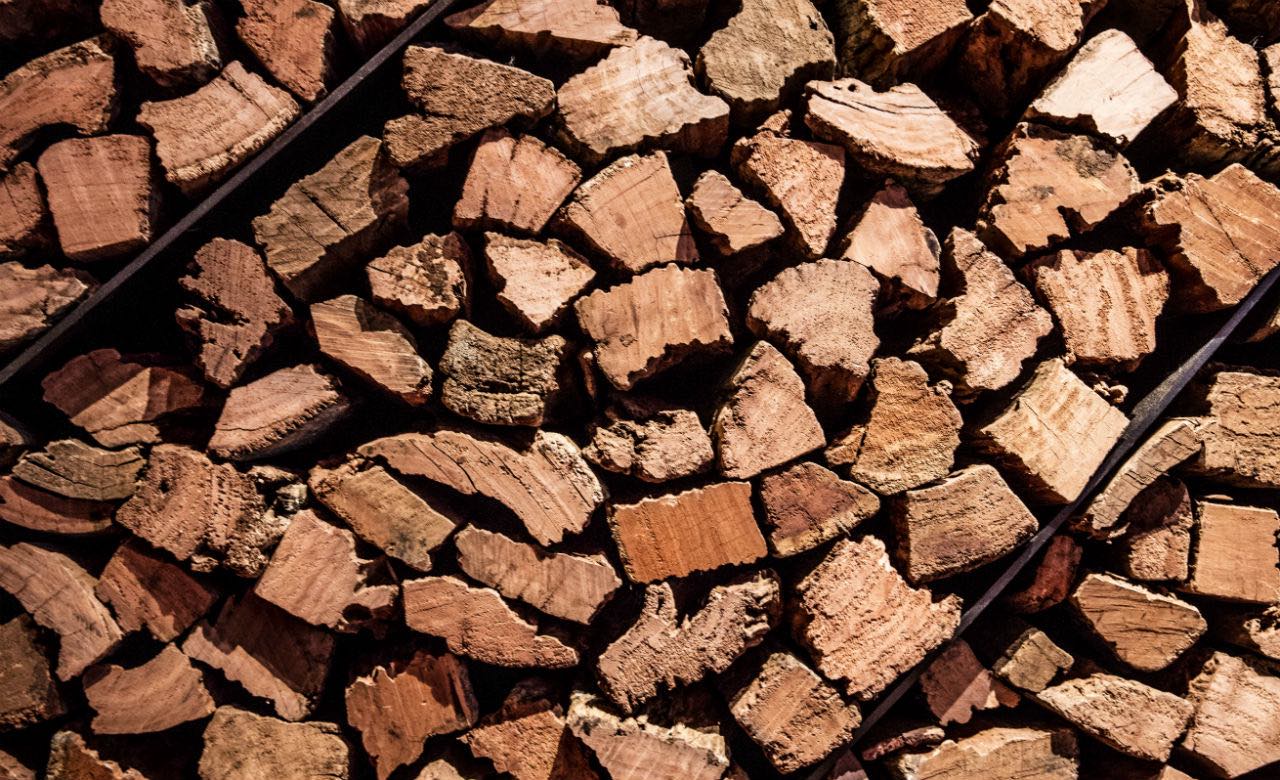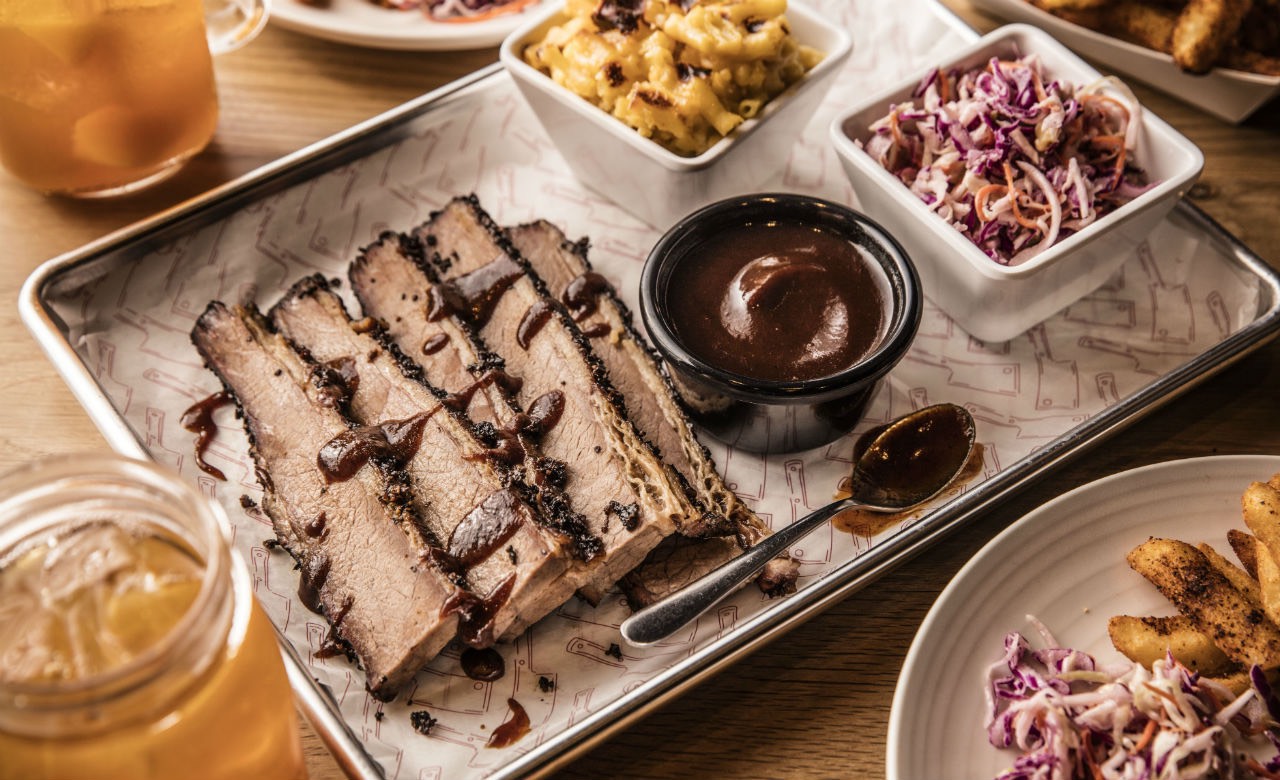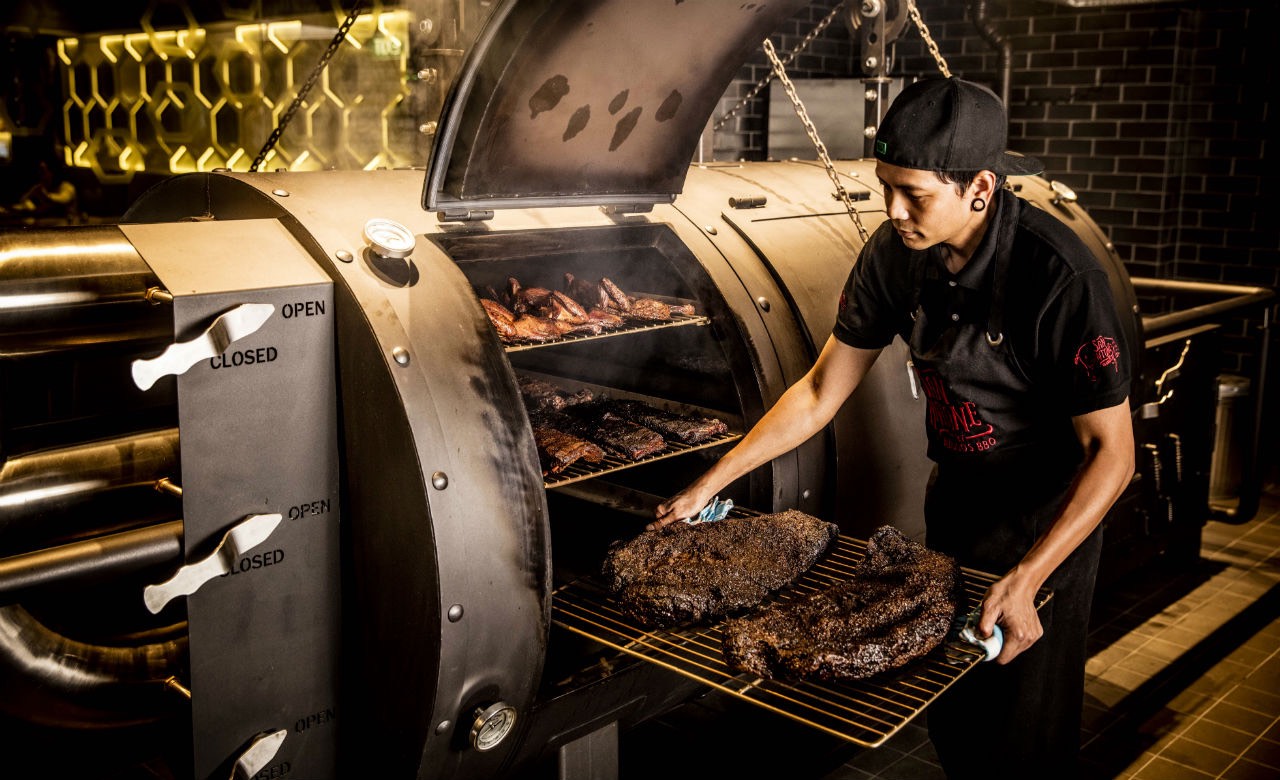Three Steps for Creating Real Texas Barbecue from a Certified Barbecue Boss
Kevin Bludso is one of North America's best barbecuers. Here's how he does it.
In partnership with
There are no shortcuts to cooking the perfect Texas barbecue, so when approached to launch San Antone by Bludso's BBQ at Crown Melbourne late last year, Kevin Bludso had one condition: it had to be done right.
The original Bludso's BBQ is located on Long Beach Boulevard in south central Los Angeles. It might seem like a strange place to go for authentic Texas barbecue, but Bludso's Compton dive — where ribs are served to-go in styrofoam take-out containers — is the only barbecue restaurant to be named by LA Times Pulitzer Prize-winning food journalist Jonathan Gold in his essential restaurants list each year. It's also perhaps the only restaurant to have its brisket likened to a Monet painting by the critic.
So how did LA-born and bred Kevin Bludso come to be one of the best Texas barbecuers in the US? As he explains it, it's all about his childhood. "Back in the day, people in LA had migrated from everywhere," Bludso says. "You had Texans plus Mexicans in south central LA; you had Texas barbecue, you had Memphis barbecue, you had Kansas City barbecue."
Then, as a nine-year-old boy, Bludso found himself shipped off for the summer to spend time with his grandmother, Willie May Fields, in Corsicana, Texas. "She had this semi-legal, semi-illegal smokehouse — a juke joint, halfway house — where she used to sell barbecue," he says. "And she had a small little room right off the highway, and she used to sell there on weekends."
Corsicana was where he earned his chops. And while he "hated it" — working in the smokehouse in almost 50 degree heat, prepping the meat, cleaning greens — the ritual (or the rewards) of the work must have resonated with him. Bludso still uses his late grandmother's smoker today.
If barbecue is in the blood in Texas, then the brisket is its heart and soul. It's prepared simply — a dry rub of salt and pepper, then cooked over wood. "Slow and low like a '64 Impala," says Bludso.
It's also regional. Memphis barbecue is particularly famous for its use of sauces, and a lot of places in Tennessee don't use wood. It all depends on what's accessible at the time and in the region.
Trying, then, to recreate authentic Texas barbecue in a foreign country is no easy feat. But we asked Kevin Bludso for a few tips on doing Texas barbecue in Melbourne. Here's what he divulged.
STEP ONE: SELECTING THE WOOD
There's a special reverence reserved for pitmasters. Working with wood is difficult, and it's their craft to find that perfect piece that will burn slowly and flavour the meat accordingly. "We use pecan, red oak and apple in the States," says Bludso. "We use apple here, but all the woods were totally different."
That's where Noah Galuten comes in. Galuten, a former food writer and Bludso apprentice, is now a pitmaster in his own right. Trying to find the right wood was a long process, Galuten says. "First we were trying out bull-oak — which was the closest oak [to what we use in LA] we could find — but it was burning too bitter. Eventually, we ended up trying ironbark, which turned out pretty well."
The issue with most Australian woods is that they burn too quickly and too hot. This might be good if you're hoping to throw a shrimp on the barbie — but in a smoker it catches and gives what Galuten calls a "bitter smoke". At San Antone, the ironbark is rounded out with Australian pecan and apple wood. The result is intoxicating.
STEP TWO: CHOOSING THE BRISKET
Finding a good brisket has been another challenge Bludso has faced in his Melbourne venture. The brisket — a cut of meat from the breast or lower chest — is essentially made up of two muscles: the flat (the leaner, flatter portion) and the point (the thicker section on the side of the cut). It's important that the cut has the right amount of fat on it too, and Bludso has had to work with a specialist butcher to meet his exact specifications and get the cuts just right.
"We don't want no healthy briskets," says Bludso. "We want all our cows with high blood pressure and cholesterol." With fat comes flavour and, according to Bludso, you want at least an inch of fat if possible — especially on the point. On the underside, a little marbling is also important.
STEP THREE: KNOWING WHEN IT'S DONE
The brisket goes fat-side up into the smoker for anywhere between 12 to 15 hours. But knowing when it's done isn't a science — it's art. "You just know it by feel," says Bludso. "As time goes on you just know by picking it up, how it feels in the hand, poking it. You just know when it's done."
Of course, Bludso 'just knows' because he's well practiced in the art of smoking. But as long as the smoker can maintain a consistent temperature — around 115 to 120 degrees celsius — there's no real reason to fuss over it. The fat cap protects the brisket from burning and maintains the moisture in the meat. Once off the smoker, the brisket gets wrapped in butcher's paper to rest before serving.
But is it authentic? "Of course, you can't get it exactly as it is [in LA] because it's different, you know?" Bludso says. "I mean, we got holes in the wall where we can get some of our stuff from [in LA] that we just can't get out here. But — like I said — I really feel we got as close to American as our products and locations [allowed us]."
If you've got access to a smoker, give this Texas barbecue thing a go. And if you don't, well, you know you can get the real thing at San Antone by Bludso's BBQ. The pit is even modelled on the smoker Bludso grew up cooking with, as used by his granny Willie May Fields.









